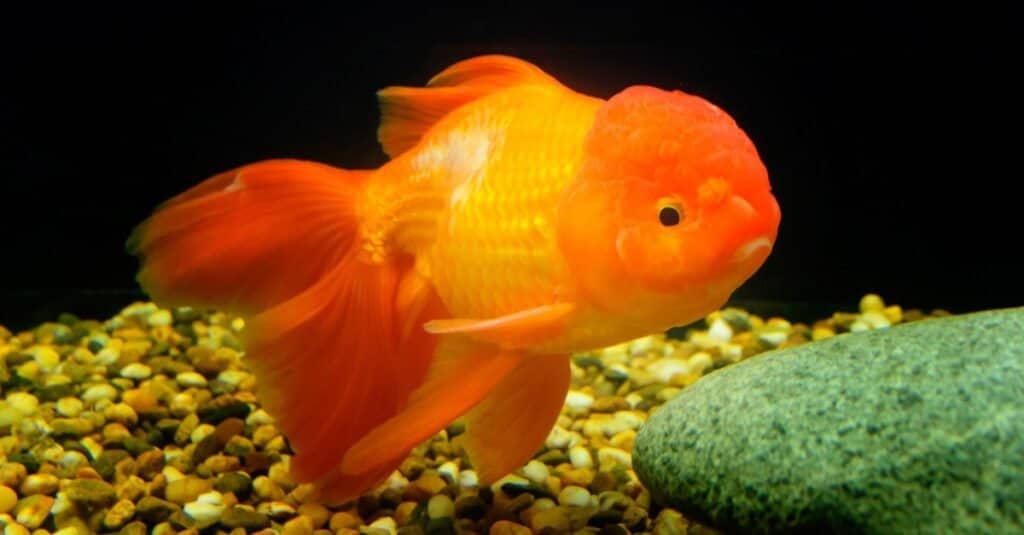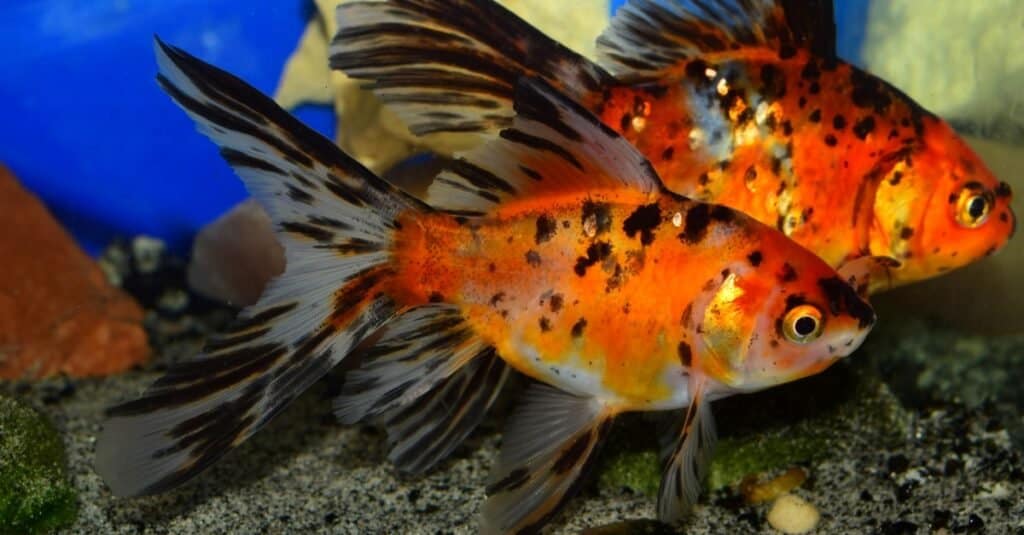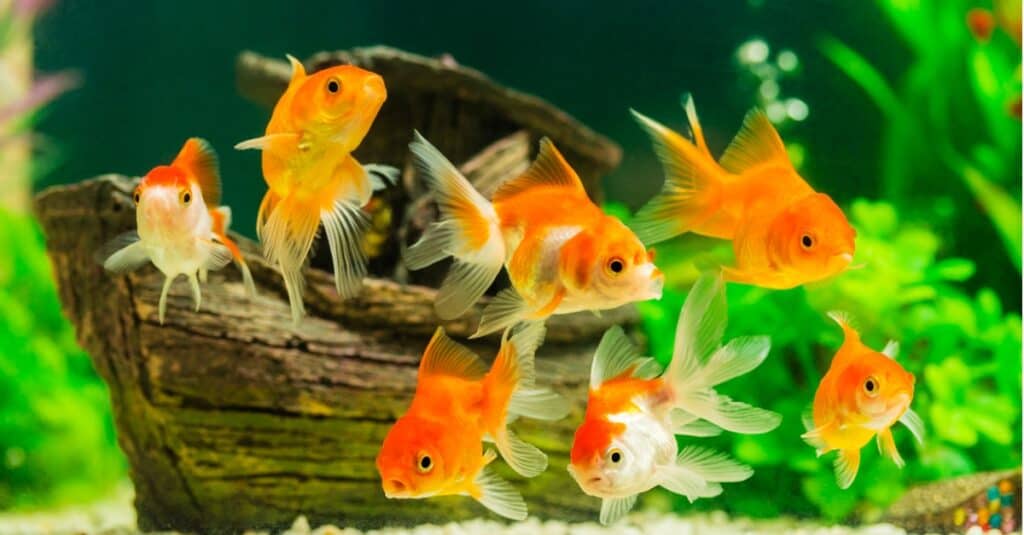Like any animal, whether goldfish are given the proper nutrients and food will impact their growth. When provided proper nutrition and an environment to grow, goldfish can reach significantly larger sizes.
As such, it’s extremely important to understand how to care for goldfish so they reach their optimum size. In the article below, we’ll dive into just how big goldfish get. We’ll also explore their largest size, and how you need to care for a goldfish to ensure they’re healthy and well-cared for.
How Big Do Goldfish Get?

Goldfish can grow as big as 2-10 inches and weigh about 5-9 pounds.
©iStock.com/Foto_by_M
In a pond, goldfish can grow as big as 2 to 10 inches and weigh about 5-9 pounds. They could even grow bigger in the wild if they had adequate space and resources. However, once your fish attains a big size, about 10 inches, it becomes much easier for it to get food and evade predators.
When goldfish are kept as pets in small fish aquariums and tanks, they tend to remain just about 1-2 inches long and never become bigger than 6 inches. But in the wild, they attain a length of up to 12 and 14 inches.
Goldfish are opportunistic omnivores, which means they have the privilege to eat a wide range of foods from insects to vegetation and invertebrates. The weight a goldfish attains depends on the variety, as well as its age. However, on an average rate, a regular pet goldfish weighs about eight ounces.
Talking about length, a type of goldfish known as fancy goldies, with their distinctive egg-shaped bodies, grow to about eight inches in length. Also, a single-tail goldfish can attain a length between 10 and 12 inches long.
How Do Baby Goldfish Grow?
Shockingly, goldfish can not eat immediately after hatching. Instead, they hide in safe places such as vegetation until their mouths develop. Growth proceeds quickly once they start swimming, with a notable increase during the first few weeks of their lives.
Growth Rate of Goldfish

Goldfish size increases with a growth rate of about 1inch per year.
©JuanCarlosPalauDiaz/Shutterstock.com
Per year, goldfish grow about one inch, with their growth rate most rapid during their first few months of living. Goldies keep growing all through their lives, unlike many other common pets. Also, depending on the environment, along with some other factors, goldfish don’t grow in spurts. For example, a fish that lives in an outdoor pond would grow more during summer and spring when the water is warmer, while it would grow less during the winter period when the temperature reduces.
How to Ensure a Goldfish Grows to its Maximum Size

Goldfish require food, space, and a suitable environment to grow as big as possible.
©iStock.com/satit_srihin
Adequate Feeding
Goldfish require feeding many times because they digest their food in their intestines due to the absence of stomachs. They should have a high proportion of protein and alkaline available in their food instead of tropical fish food, which is not marked out for consumption by goldfish.
To reiterate, goldfish are omnivorous, which describes their ability to eat bugs and vegetable matter, as well as smaller fish like guppies.
A Spacious Environment
The large size of goldfish is why they require sufficient water to spread out and have enough room to swim. However, if they are placed in a small bowl, they would still grow, but much more slowly. It’s best to supply at least one gallon of water per fully grown fish because it gives the fish the opportunity to explore their niche.
Furthermore, plan the aquarium space regarding the enormous size it can become and not how big it was at the time of purchase.
Conditions of Water
Strangely, goldfish enjoy the presence of some algae in their aquatic environment. Algae give goldfish something to nibble on whenever they feel like it. And since goldfish are often hungry, the algae is an excellent way to promote their nutrition and encourage fast growth. It is safe to conclude that goldfish thrive even in a water environment that is not perfectly good.
Variables of Temperature
In a warmer environment, goldfish grow faster. This is most likely because the conditions enhance the growth of more beneficial bacteria and the presence of more insects for goldfish to feed on. While in very high cold water temperatures (such as winter), they hibernate partially and grow more slowly.
Since goldfish are cold-water fish, they thrive more in temperatures ranging from 65 to 80 degrees Fahrenheit.
Causes of Lack of Growth in Goldfish
In goldfish, stunting (lack of growth) is defined as a means of biologically preventing the development of other goldfish in the environment, and it unintentionally getting stunted via a pheromone released to the water column or any other substance. The following are some reasons behind stunted growth in this fish which should be avoided as much as possible:
- Improper feeding.
- Not enough room to grow.
- Filthy water.
The photo featured at the top of this post is © Wang Sing/Shutterstock.com
Thank you for reading! Have some feedback for us? Contact the AZ Animals editorial team.






